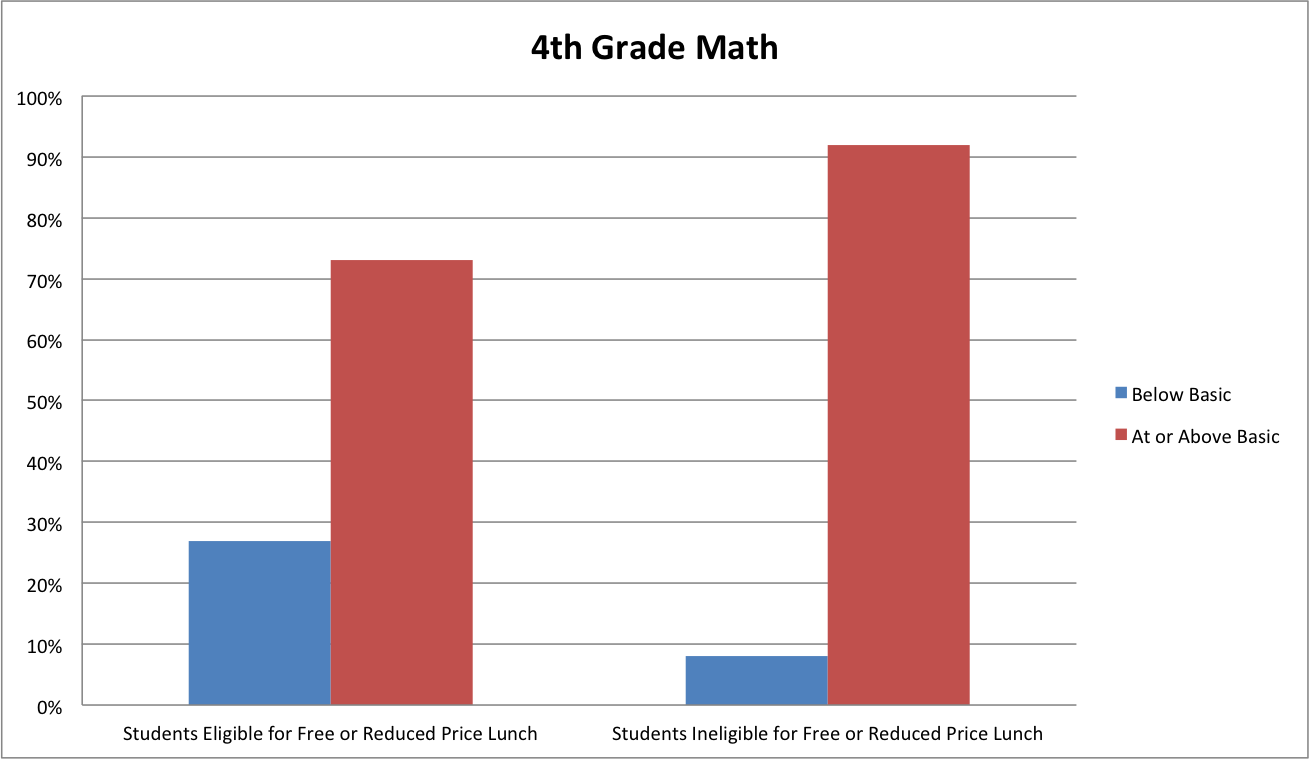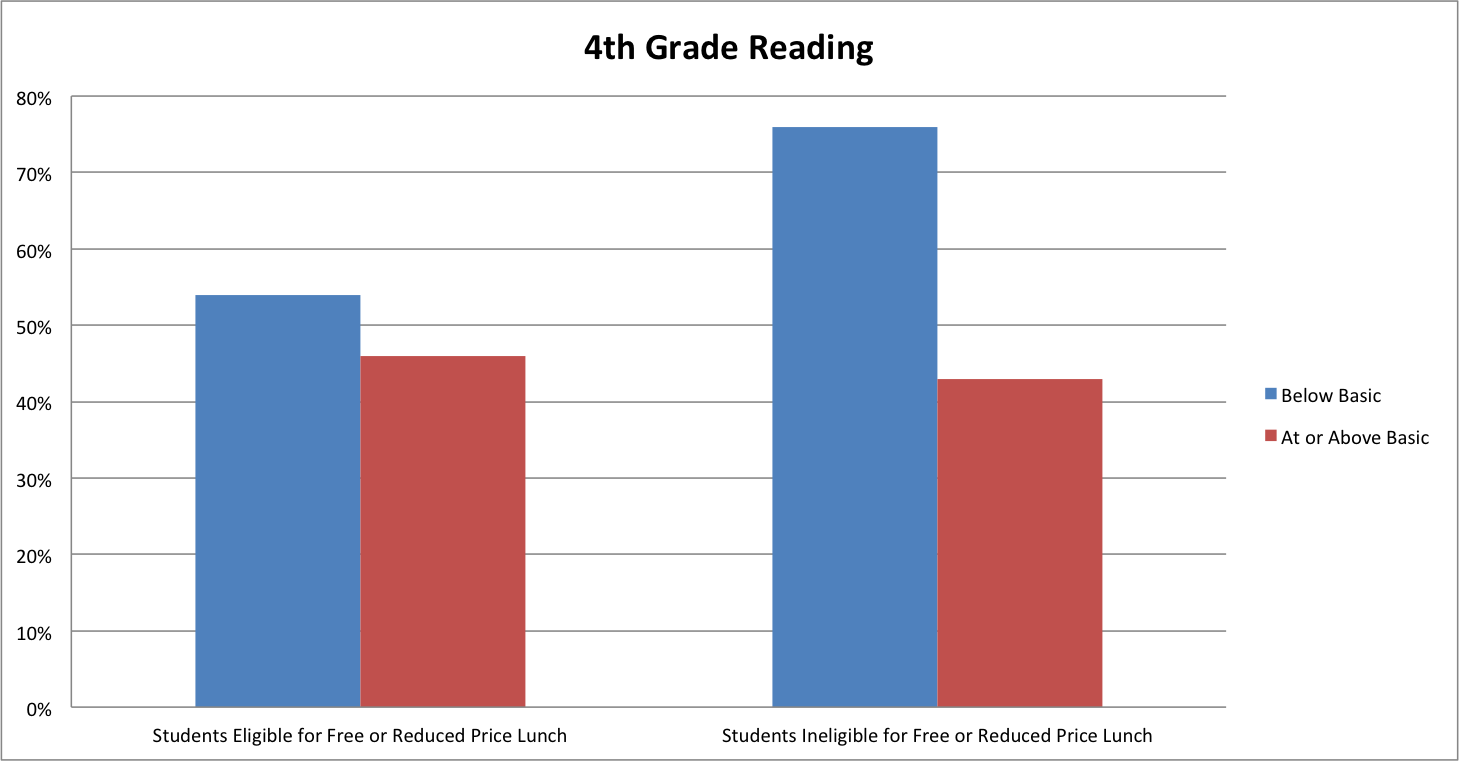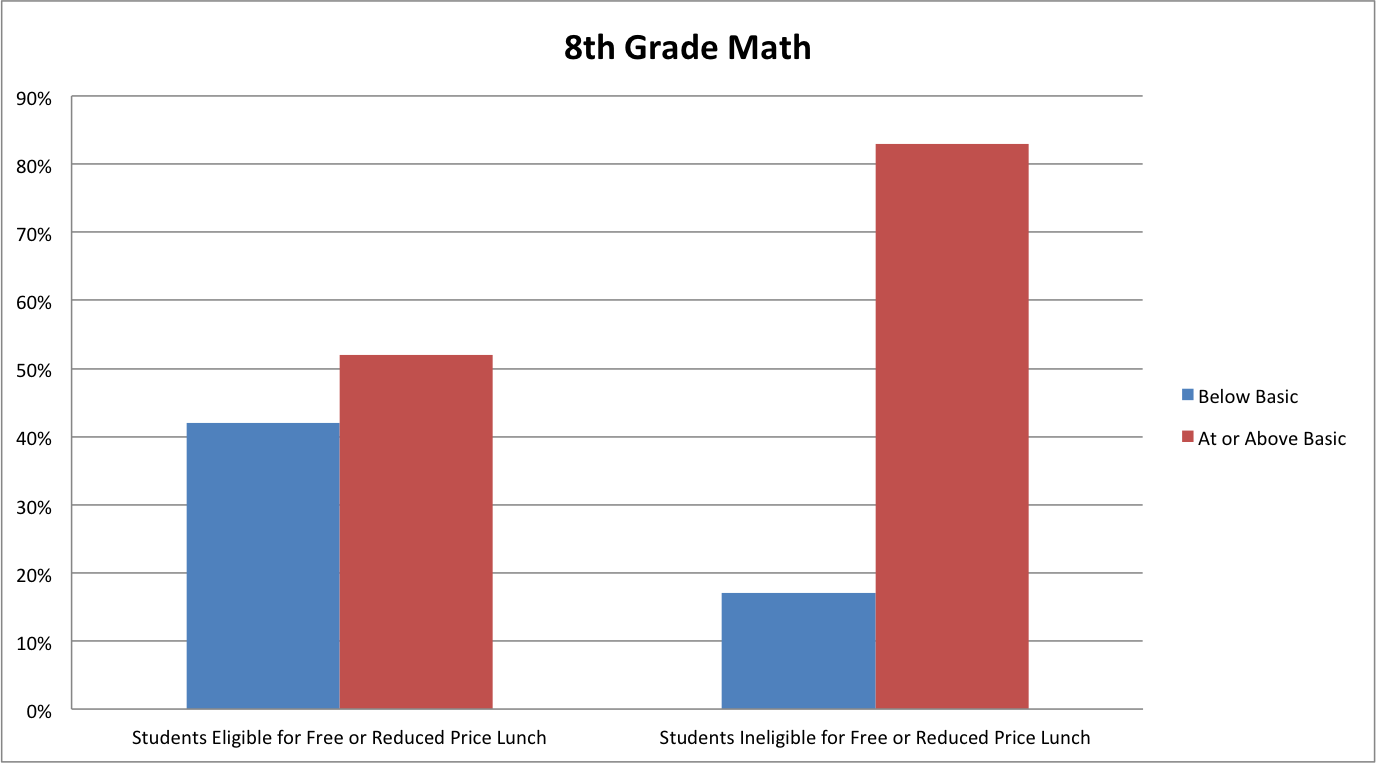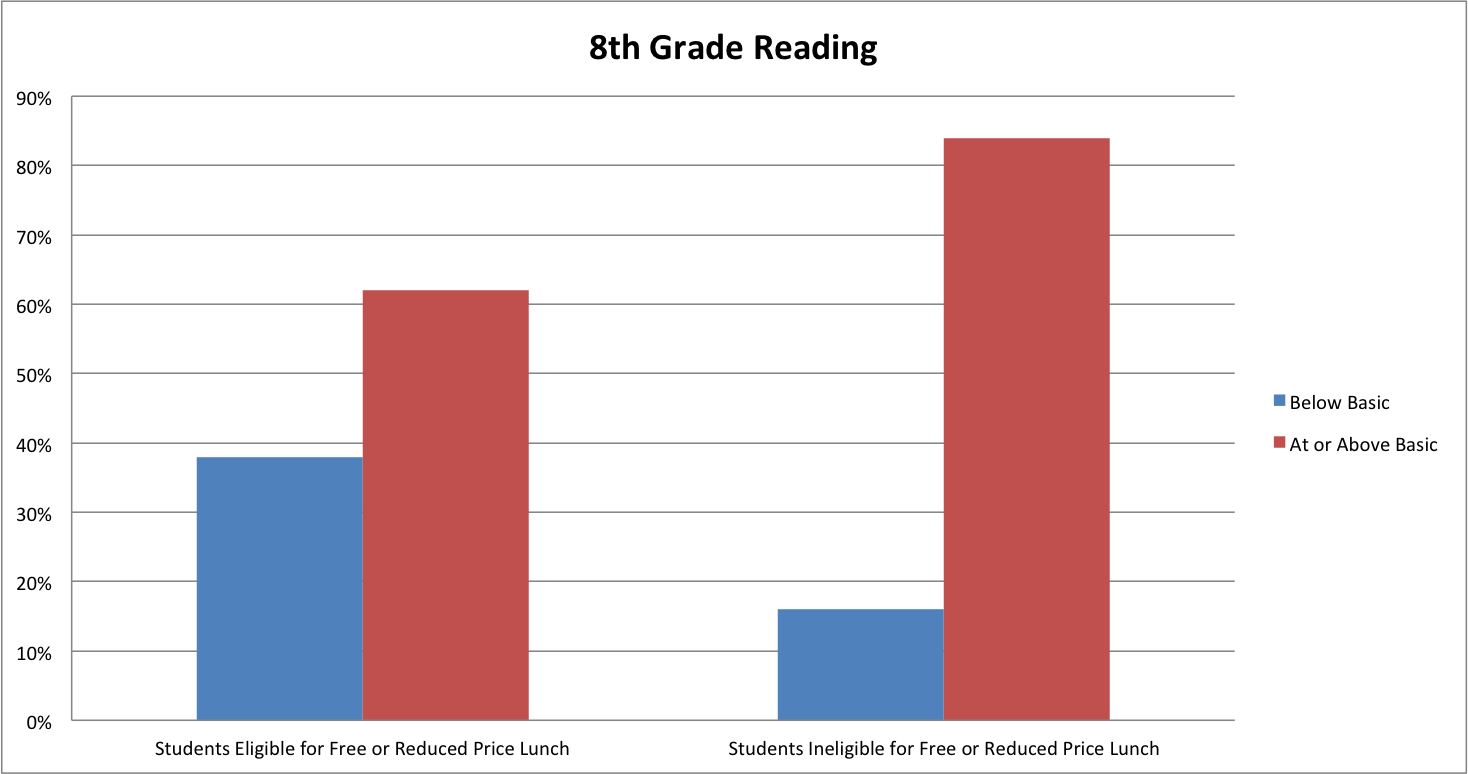Many Arizona students from low-income families are underscoring their peers from higher income households in Arizona and nationally by significant margins on national measures of student progress.
Results of the National Assessment of Educational Progress released in November show that 20 to 30 percent more of Arizona students eligible for free- or reduced-price lunch scored below basic on the test in 2013 than students from families with higher incomes.
In 2013, six out of every 10 Arizona students qualify for free- or reduced-price lunch because their families’ incomes, according to the Arizona Department of Education’s March 2013 data.

About 55 percent of Arizona children from birth to 8 years old lived in poverty in 2012, according to the recently released Annie E. Casey Foundation report “The First Eight Years: Building a Foundation for Lifetime Success.”
“We have longitudinal data showing that a large majority of third graders are behind in their cognitive skills, their social and emotional skills, and their physical skills,” said Dana Wolfe Naimark, president of Children’s Action Alliance during a recent interview on the public affairs program “Horizon.”
Naimark said Arizona lags the nation when it comes to child welfare indicators. “We have more kids living in low income families and fewer children in preschool, so we have many children starting kindergarten behind,” she said.
Many poor parents are worried about making ends meet, may not have school supplies or books at home, and have concerns about safety in their neighborhoods, Naimark said.
“If that’s what you’re thinking about, you’re really not spending time doing the math homework,” Naimark said. “You’re busy thinking how am I going to put food on the table and pay the bills this month.”
Over all, Arizona fourth-graders’ NAEP scores in math were at the national average in math, but below the average in other areas.
“Arizona students showed dramatic growth in fourth-grade mathematics, and remained consistent in eighth-grade math,” Arizona Superintendent of Public Instruction John Huppenthal said. “Fourth- and eighth-grade reading scores remained stable.”
Still, less than half of Arizona students tested performed at or above proficiency. Forty-nine percent of fourth-graders and 31 percent of eighth-graders tested at or above proficiency in math, while just 28 percent of fourth- and eighth-graders did in reading, according to the NAEP results.
 Nationally, 73 percent of fourth-grade students who qualified for free- or reduced-price lunch scored at basic or above levels in math on the NAEP in 2013, compared to 93 percent of students who were not eligible. Twenty seven percent of eligible students scored below basic in math, while only 7 percent of those not eligible did.
Nationally, 73 percent of fourth-grade students who qualified for free- or reduced-price lunch scored at basic or above levels in math on the NAEP in 2013, compared to 93 percent of students who were not eligible. Twenty seven percent of eligible students scored below basic in math, while only 7 percent of those not eligible did.
 Fifty three percent of 4th grade students eligible for free- or reduced-price lunch scored at basic or above levels in reading nationally, compared to 83 percent of students not eligible. Forty seven percent of eligible students scored below basic in reading, while only 17 percent of those not eligible did.
Fifty three percent of 4th grade students eligible for free- or reduced-price lunch scored at basic or above levels in reading nationally, compared to 83 percent of students not eligible. Forty seven percent of eligible students scored below basic in reading, while only 17 percent of those not eligible did.
 Nationally, 60 percent of eighth-grade students eligible for free- or reduced-price lunch scored at basic or above levels in math in 2013, as did 86 percent of students not eligible. Forty percent of eligible students scored below basic in math, while only 14 percent of those not eligible did.
Nationally, 60 percent of eighth-grade students eligible for free- or reduced-price lunch scored at basic or above levels in math in 2013, as did 86 percent of students not eligible. Forty percent of eligible students scored below basic in math, while only 14 percent of those not eligible did.
 Nationally, 66 percent of eighth-graders eligible for free- or reduced-price lunch scored at basic or above levels in reading in 2013, as did 87 percent of students not eligible. Thirty four percent of eligible students scored below basic in reading, yet only 13 percent not eligible did.
Nationally, 66 percent of eighth-graders eligible for free- or reduced-price lunch scored at basic or above levels in reading in 2013, as did 87 percent of students not eligible. Thirty four percent of eligible students scored below basic in reading, yet only 13 percent not eligible did.











